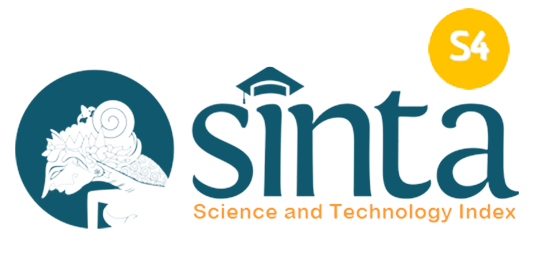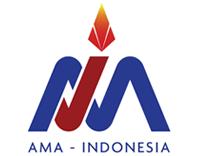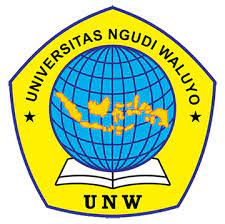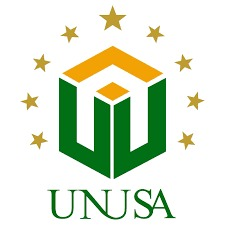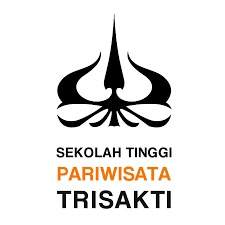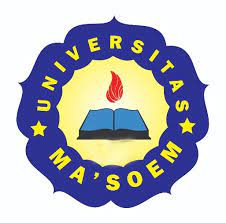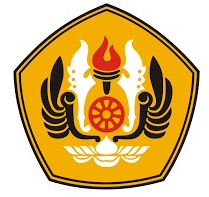Pola Kerja Sama antara Perusahaan Telepon Selular dan Pemasok Material dengan Mempertimbangkan Product Life Cycle
Abstract
An innovation product is known to have a relatively shorter lifecycle compared to a functional product. Innovations made by manufacturers accelerate the obsolescence of innovative products, so producers need to work together with their suppliers with flexible patterns. Suppliers always achieve efficiency and minimize the risk of unsold inventory, while innovative mobile phone manufacturers are constantly releasing new products. Flexible cooperation that can be implemented is non-equity and leads to joint collaboration, so that suppliers and cellphone companies can jointly maintain business continuity. Communication and participation are the keys to the success of this collaboration. This article provides a framework that shows the relationship between the product lifecycle and the pattern of cooperation between suppliers and cellphone manufacturers that can be developed into further research.
Full Text:
DOWNLOAD (PDF) (Bahasa Indonesia)References
Amy J. Hillman dan Michael C. Whiters, dan Brian J. Collins (2008) “Resource Dependence: A Review.†Journal of Management, Vol 35 No. 6, h. 1404-1427.
Barney, J. (1991) “Firm Resources and Sustained Competitive Advantage.†Journal of Management, 17(1), h. 99–120.
Birou, Laura M., Stanley E. Fawcett, dan Gregory M. Magnan (1998) “The Product Life Cycle : A Tool for Functional Strategic Alignment.†International Journal of Purchasing and Materials Management. The National Association of Purchasing Management, Inc. Module 4.
Bouwman, Harry (2014) “How Nokia Failed to Nail the Smartphone Market.†25th European Regional Conference of the International Telecommunications Society (ITS), Brussels, Belgium.
Cainarca, Gian Carlo, Massimo G. Colombo dan Sergio Mariotti (1992) “Agreements between Firms and the Technological Life Cycle Model: Evidence from Information Technologies.†Elsevier Science Publisher B.V., h. 45-62.
Catherine L. Winchester dan Mark Salji (2016) “Writing a Literature Review.†Journal of Clinical Urology, Vol 9(5), h.308-312.
Chang, Cheng-Wen, David M. Chiang, dan Fan-Yun Pai (2012) “Cooperative Stragey in Supply Chain Networks.†Industrial Marketing Management, No. 41, h. 1114-1124.
Cohen, Wesley M. dan Daniel A. Levinthal (1990) “Absorptive Capacity: A New Perspective on Learning and Innovation.†Administrative Science Quarterly, Vol. 35, No. 1, h. 128-152.
Daniel Knudsen, (2003) "Aligning corporate strategy, procurement strategy and eâ€procurement tools", International Journal of Physical Distribution & Logistics Management, Vol. 33 Issue: 8, h.720-734.
Day, George S. (1981) “The Product Life Cycle : Analysis and Applications Issues.†Journal of Marketing, Vol.45,. h. 60-67.
Dean, Joel (1950) “Pricing Policies for New Product.†Harvard Business Review, Vol. 2 No. 6, h. 45-53.
Dyer, J.H. and Singh, H. (1998) The Relational View: Cooperative Strategy and Sources of Interorganizational Competitive Advantage. Academy of Management Review, No. 23. h. 660-679.
Ercan, Mine, Jens Malmodin dan Pernilla Bergmark (2016) “Life Cycle Assessment of a Smartphone.†4th International Conference of ICT for Sustainability. Atlantis Press.
Fenner, Robert (2018) “How Global Smartphone Sales Growth Ground to a Halt.†Bloomberg Business Week, 2018 (https://www.bloomberg.com/news/articles/2018-08-13/how-global-smartphone-sales-growth-ground-to-a-halt-quicktake, diakses 22 Februari 2019).
Giachetti, Claudio dan Gianluca Marchi (2010) “Evolution of Form’s Product Strategy Over the Life Cycle of Technology Based Industries : A Case Study of the Global Mobile Phone Industry 1980-2009.†Business History, Vol. 57, No. 7, h. 1123-1150.
J. Bendinger (1993) “Integrated Logistics Management: Benefits and Challenges,†OR/MS Today, h. 34-36;
J.E. Oxley (1997) “Appropriability Hazards and Governance in Strategic Alliances : A Transaction Cost Approach.†Journal of Law Economics and Organization, No. 13, h. 47-68.
J. Hennart (1988) “A Transaction Costs Theory of Equity Joint Ventures.†Strategic Management Journal, Vol. 9 No. 4, h. 361-374.
Lee, Hau L. (2002) “Aligning Supply Chain Strategies with Product Uncertainty.†California Management Review, Vol. 44, No. 3, h. 105-119.
M. Caputo dan V. Mininno (1996) “Internal, vertical and horizontal logistics integration in Italian grocery distributionâ€, International Journal of Physical Distribution and Logistics Management, Vol. 26 No. 9, h. 64-90.
M. Fisher (1997) “What is the Right Supply Chain for Your Product.†Harvard Business Review, 75/2 : h. 105-116.
M. Yoshino & Rangan, S. (1995) “Strategic Alliances: An entrepreneurial approach to Globalization. Boston, MA: Harvard Business School Press.
Park, N.K., Mezias, J.M., dan Song, J., (2004) “A Resource-Based View of Strategic Alliances and Firm Value in The Electronic Marketplace.†Journal of Management, 30 (1), h. 7–27
P.D. Cousins (2002) “A Conceptual Model for Managing Long Term Interorganisational Relationshipsâ€, European Journal of Supply Chain and Management, Vol. 8 No. 2. h. 71-82.
P. Hines (1995) “Network Sourcing: A Hybrid Approach.†International Journal of Purchasing and Materials Management, Vol. 31 No. 2, h. 17-24.
Prahalad, C. K. dan Gary Hamel (1990) “The Core Competence of the Corporation.†Harvard Business Review, Vol. 68, Issue 3, h. 79-91.
R.E. Spekman dan K. Sawhney (1990) “Towards a Conceptual Understanding of the Antecedents of Strategic Alliances.†Marketing Science Institute, Cambridge, MA, h. 90-114.
Rink, David R. (1976) “The Product Life Cycle in Formulating Purchasing Strategy.†Industrial Marketing Management. Amsterdam : Elsevier Publishing Company, h. 231-243.
Rink, David R. dan John E. Swan (1979) “Product Life Cycle Research : A Literature Review.†Journal of Business Research, North Holland : Elsevier Inc. h. 219-242.
Robert M. Monczka, Kenneth J. Petersen, Robert B. Handfield, dan Gary L. Ragatz (1988) “Success Factors in Strategic Supplier Alliances : The Buying Company Perspective.†Decision Science, No. 3 Vol. 29, h. 553-577.
Suckling, James dan Jacquetta Lee (2015) “Redefining Scope : The True Environmental Impact of Smartphones?†International Journal of Life Cycyle Assessment, No. 20, h. 1181-1196.
Teece, David J. Gary Pisano. Amy Shuen. (1997) “Dinamic Capabilities and Strategic Management.†Strategic Management Journal, Vol. 18:7, h. 509-533.
T.M. Collins. dan T.L. Doorley (1991) “Teaming Up for the 90s : A Guide To International Joint Ventures and Strategic Alliances.†Homewood : Business One Irwin.
Top 10 Best Selling Smartphone Brands in the World Right Now. (https://businesstech.co.za/news/mobile/262671/top-10-best-selling-smartphone-brands-in-the-world-right-now, diakses 22 Februari 2019).
Umeda, Yasushi. Et Al. (2012) “Toward Integrated Porduct and Process Life Cycle Planning – An Environmental Perspective.†Journal of Manufacturing Technology, No. 61, 2012. h. 681-702.
DOI: http://dx.doi.org/10.52434/jwe.v18i2.513
Refbacks
- There are currently no refbacks.
Faculty of Economics, Garut University
Samarang Street. Number. 52.A Tarogong kaler - Garut West Java 44151
(0262) 544-218
(0262) 231-013
Email : jwe@fekon.uniga.ac.id
Email : fekon@uniga.ac.id
Hotline Jurnal Fakultas Ekonomi : 0821-1770-5966

Jurnal Wacana Ekonomi is an Online Journal of the Faculty of Economics: Scientific Creations and published Research Results Lisensi Creative Commons Atribusi-BerbagiSerupa 4.0 Internasional.
Download Template :
Visitors :
View My Stats





